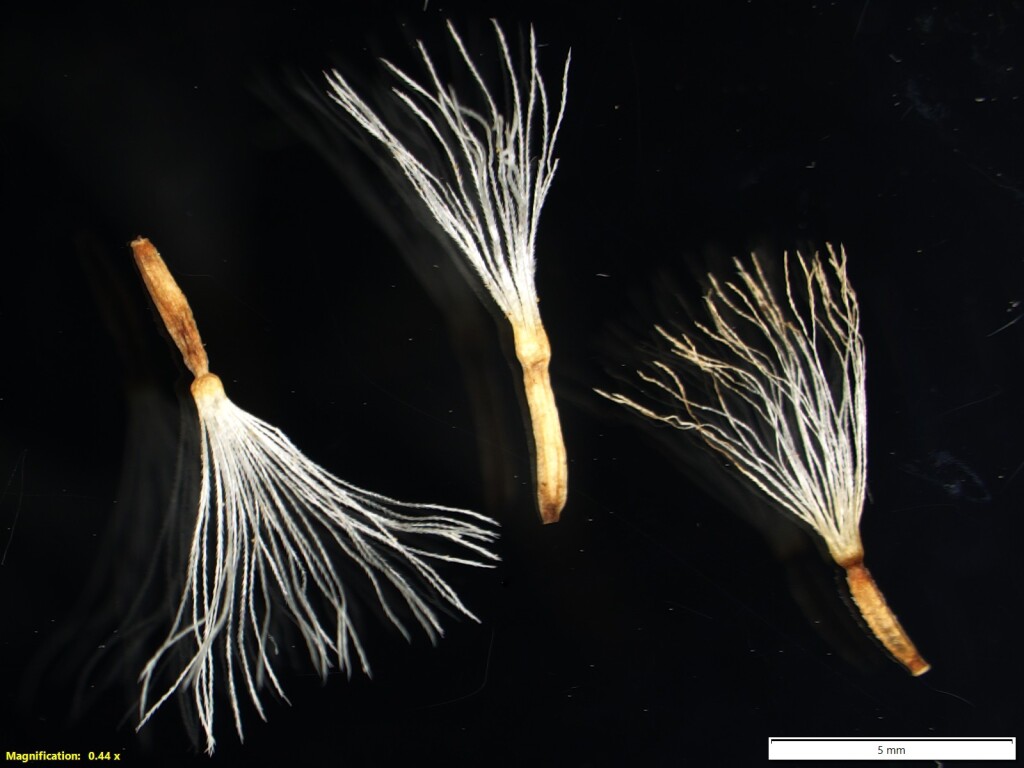Podolepis laciniata
FroodPerennial, strongly taprooted herb to c. 70 cm high, with 1–several stems arising from basal rosette. Basal leaves narrowly oblanceolate, with acute to narrowly obtuse apex, 6–28 cm long, mostly 1.8–5 cm wide, greyish when young, with short, crisped multicellular hairs overlain by fine arachnoid hairs, the latter usually denser on the abaxial surface, becoming sparser with age; cauline leaves with similar pubescence to the basal ones but often more densely indumented. Capitula campanulate, 30– 50(–55) mm diameter, 3–17 in a loosely corymbose panicle, almost flat-topped at maturity; peduncles elongating, (6–)14–18 cm long at anthesis, with 1–several reduced leaf-like bracts, grading into hyaline outer involucral bracts; claw of intermediate involucral bracts usually 1.5–2 mm wide (rarely narrower), c. 7–11 mm long, with honey-coloured crisped and glandular pubescence of variable length, but mostly 0.2–0.3(–0.5) mm long; lamina of intermediate involucral bracts broadly ovate to reniform, c. 5–7 mm wide, c. 6–10 mm long. Florets bright, clear yellow; ligulate florets 14–20 mm long (from base of pappus to apex), c. 3–4.5 mm wide, apex deeply incised into 3–5 lobes c. 2–4.5 mm long, rarely with secondary lobing; tubular florets 9–12 mm long, with corolla lobes 1–2 mm long. Cypselas 3–4.5 mm long, scabrid to papillose, at least in upper portion; pappus bristles barbellate-plumose, c. 6–8 mm long. Flowers mostly Jan. and Feb.
EGU, VAlp. Also NSW and ACT. Mostly in grassy habitats near the treeline (mostly Eucalyptus pauciflora), or below. Altitude range c. 1200–1700 m.
Usually at lower altitudes than Podolepis robusta with which it was included, but occasionally occurring with that species.
 Spinning
Spinning
